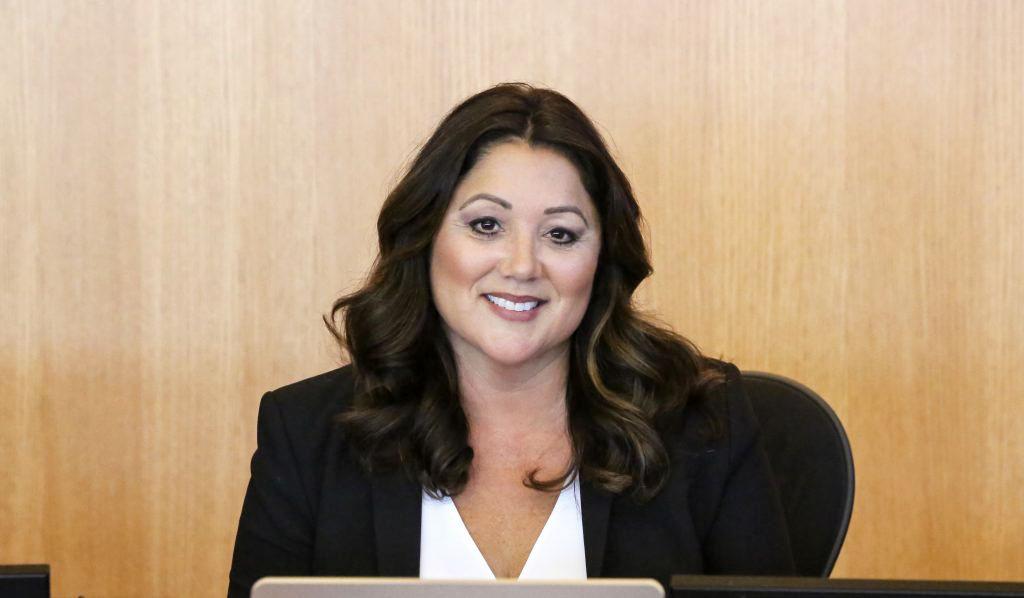City mayors and state and local lawmakers are calling for a temporary pause in ocean-floor work after an eighth dead whale washed ashore in New Jersey this week, reigniting the debate about the impact of offshore wind-farm development on marine life.
The mayors are calling for an immediate halt to plans to build dozens of offshore wind turbines.
“We are concerned about the impacts these [offshore wind] projects may already be having on our environment,” the mayors stated in a letter to the National Oceanic and Atmospheric Administration (NOAA).
But NOAA says the deaths are not related to the wind turbines.
“I want to be unambiguous. There is no information supporting that any of the equipment used in support of offshore wind development could directly lead to the death of a whale,” wrote Benjamin Laws, NOAA deputy chief of the permits and conservation division.

Save LBI, a New Jersey-based group that opposes offshore wind farms close to shore disagrees.
It reports that “at least six vessels were conducting geotechnical surveys off the New Jersey coast during December and January” and claims that the “DuraSpark UHD being used produces enough sound energy to penetrate the ocean floor to a depth of 328 feet with a blast frequency of twice per second.”
Concerning the Pacific
With the West Coast preparing for floating offshore wind-farm development, Oregonians are taking note of the debate, even as four dead whales have coincidentally stranded along the Pacific Coast—including two adult gray whales, a 12-foot gray whale calf, and a 40-foot long male sperm whale—since Jan 14.Such strandings are not unusual, according to NOAA spokesperson Michael Milstein.
“In this case, some carcasses that would not have otherwise come ashore were likely carried in by stormy weather and shown up in places where they are more likely to be found,” Millstein told The Epoch Times.
Floating Offshore Wind
Floating offshore wind farms are a relatively new concept, with only a few facilities operating around the world. Planned developments in California and Oregon could be the first in the nation.Unlike the offshore fixed-wind platforms on the east coast—which involve a wind turbine mounted on a fixed foundation in the sea—floating wind involves a structure that floats in the water and is tethered to the seabed to keep it in place. These designs are reportedly better suited for the depths of the Pacific Coast.
Putting turbines on floating platforms allows development in deeper waters, which means more potential project sites and more potential capacity.
“Some 60 percent of available offshore wind resources in the United States is beyond the reach of fixed-bottom foundation turbines, including practically the whole of the West Coast,” according to a 2017 statement from industry body WindEurope.

As envisioned, 800-foot tall turbines will float on triangular platforms roughly the size of a small city block with cables connecting each to four 50-ton concrete blocks, or embedment anchors. Each will have three blades longer than 700 feet. They will be assembled onshore and towed, upright, to their open-ocean destination.
The Bureau of Ocean Energy Management (BOEM) has already granted leases for five “patches” of ocean off the California coast for floating wind development, yielding $757 million to the federal treasury.
In the next 18 months, BOEM plans to auction two more leases encompassing 1.15 million acres starting 12 miles offshore along the south-central and southern Oregon coast.
Such developments are a key component of the Biden administration’s clean energy strategy.
Acknowledging the risk to marine life—including that of whales becoming tangled in the moorings and cables associated with floating wind platforms— federal agencies have commissioned more than a dozen studies of the environmental, economic, and social impact of large-scale development along the Pacific Coast.
Marine Life Mosaic
The MOSAIC project is the most extensive inventory of sea life ever undertaken on the Pacific Coast, spanning a region from Cape Mendocino, California, to the mouth of the Columbia River on the Oregon/Washington border and west to the continental slope to a depth of 3,000 meters.The project will include visual surveys and acoustic monitoring of seabirds, whales, dolphins, and porpoises during all seasons.
Researchers are collecting identification photographs of individual baleen whales, data from satellite-tagged whales, and DNA profiles.
The data will provide insight into whale behavior, population identity, and site fidelity, meaning the likelihood the animals will return to the same location each year.
“The results of our data will be delivered as a map of species distribution and behavior that could be used as a baseline for any type of future development decisions,” OSU Marine Mammal Institute director and lead MOSAIC investigator Lisa Ballance told The Epoch Times.
‘A Lot of Large Whales Out There’
“The [continental] shelf and the slope have high abundance and high density of marine mammals and seabirds,” said Ballance. “There are quite a lot of large whales out there.”“Humpbacks are abundant and we’re increasingly seeing blue whales. We have even seen a whale that most people are not aware of called a sei whale,” which looks similar to a blue whale and is nearly as big.
Blue whales, sei whales, as well as some sub-populations of humpbacks are federally listed as endangered. The Pacific Northwest’s critically endangered Southern Resident killer whales also travel along Oregon’s outer coast.
Right now, the MOSAIC team is gathering data.
“Our job is to inform the industry and associated regulatory bodies about what’s out there so they can make informed decisions, should they decide to move forward with these platforms, about where they might be placed,” Balance told The Epoch Times.
“If floating offshore wind comes to the Pacific Coast, there will be regulatory requirements to monitor the area to make sure that protected species are not impacted, and if they are impacted, how might those impacts be mitigated,” she said.
Ballance was not prepared to weigh in about whether anchoring massive floating wind turbines amid this maritime abundance would create problems.
Fishing for Perspective
The fishing industry is concerned that the infrastructure associated with offshore floating wind farms will take some of the most productive fishing areas out of production.A bigger concern for them is that the infrastructure could actually disrupt the California Current, one of the five most productive ecosystems in the world.
In a published transcript from a Sept. 2022 Oregon Public Broadcast interview, Nick Edwards, a commercial fisherman in Oregon for 42 years, shared his concerns about the unintended consequences that offshore wind could have for the fishing industry and the environment.
“We have one of the most pristine ecosystems in the world,” Edwards said.
The California Current runs south from British Columbia to Southern California Baja Sur. Described as a conveyor belt, it draws cool nutrient-rich waters from the Alaska current down along the western coast of North America to the Baja Peninsula.
According to NOAA, this highly productive coastal ecosystem full of phytoplankton supports populations of krill, squid, sardines, and other species that are fed upon by larger fishes, seabirds, and marine mammals.
“So you’re putting something in this ecosystem that, with the wind wake, could permanently change the path of the California Current, and that feeds a huge base of the rich Pacific Ocean,” Edwards said. “You’re changing an ecosystem because of [concerns about] climate change and without knowing the full impact.”
“It could be catastrophic.”
Effect on Seafood Industry
“Dams and hydroelectric dams had unintended consequences to the Pacific Salmon,“ Edwards said. “Now the governors of Oregon, Washington, and California, want to take out the dams to restore the salmon runs.”“I don’t want offshore wind to [have] unintended consequences on West Coast seafood.”
Edwards reflected on the risks associated with Pacific Coast weather events such as the catastrophic Columbus Day Storm of 1962. It blew between 60 and 120 miles an hour and whipped up 30-foot seas.
“We couldn’t keep a weather buoy attached to the bottom in those conditions. How are you going to keep these attached to the bottom,” Edwards asked.
“Imagine the domino effect if 100 or 200 of these towers broke free.”
Edwards also expressed his concerns about the infrastructure itself.
Each one of these 200 turbines would be spaced about a mile apart, and have four embedment anchors weighing about 50 tons.
“So you’re taking up valuable fishing grounds that are in the most productive ecosystems in the world” at a time when food insecurity is of great concern.
“And these embedment anchors will be there until the end of time,” Edwards said. “We’ll never be able to fish there ever again.”
Then there are miles and miles of chain, miles of cable and you’re gonna electrify the seabed floor with high voltage current.”
‘What could possibly go wrong?





